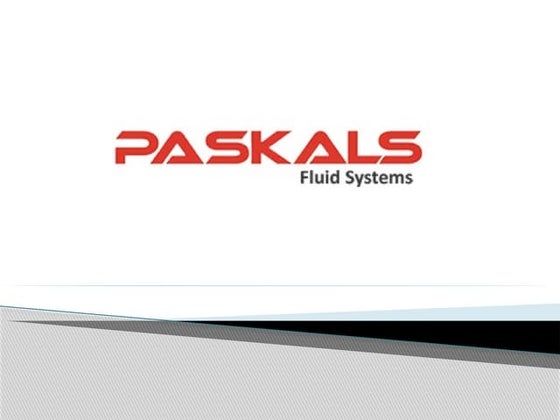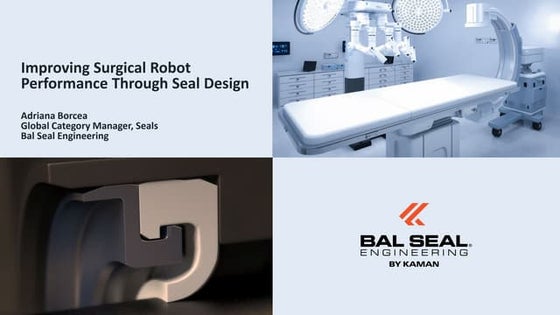04 affidabilita modelli_per colata_en
0 likes64 views
A debris flow occurs when high intensity rainfall rapidly produces runoff that entrains debris material in channels. This forms a solid-liquid wave that increases in velocity as it erodes sediment while flowing downstream. Eventually the debris flow slows and deposition begins. Accurately simulating debris flows requires models for rainfall-runoff hydrology, debris flow triggering, and downstream hydraulic routing that reproduce physical processes and are validated against measurements of past events. The reliability of simulation results depends on models' abilities to replicate measured quantities like discharge, erosion depths, deposition depths, maximum levels, and routing times.
1 of 5
Download to read offline





Recommended
01 colate detritiche_fenomeno_en-2



01 colate detritiche_fenomeno_en-2CIAT
Ěý
1) Debris flows occur when high intensity rainfall generates abundant runoff that entrains large quantities of debris material in channels, forming solid-liquid flows.
2) Debris flows can damage infrastructure and be deadly, as evidenced by photographs of destroyed villages, flooded roads, and debris deposits from past events.
3) Proper modeling of debris flows requires considering the hydrologic, triggering, and hydraulic processes involved - from runoff generation to downstream routing of the solid-liquid mass.DSD-INT 2015 - Effects of fluvial mud supply on large scale - l. braat



DSD-INT 2015 - Effects of fluvial mud supply on large scale - l. braatDeltares
Ěý
This document discusses a study investigating the effect of fluvial mud supply on large-scale estuarine morphology. The study uses a 2D morphological model with a bed module for sand-mud mixtures to simulate scenarios with different fluvial mud input concentrations. Results show that higher mud concentrations lead to narrower and shallower estuaries and channels with less dynamics. However, issues were discovered with the model's representation of dry cell erosion over long timescales. Future work is needed to expand the model and obtain more validation from field data.CFD By Fuxi Ma



CFD By Fuxi Mafuxima
Ěý
Weir Flow
Spillway Flow
Data Assimilation
3D River Flow
Hydraulic Jump
Jet Plume
Sediment Deposition
Modeling of St. Margaret’s Bay07 colate detritiche_deposizione_en



07 colate detritiche_deposizione_enCIAT
Ěý
The document discusses debris flow deposition and effects. It notes that as a debris flow's velocity decreases due to a declining slope, solid particles will begin to deposit. The deposition rate and runout area depend on flow velocity - higher velocities result in larger runout areas. Where debris flows reach flat areas or channels, large deposition fans can form. Examples show debris flows destroying structures in their path and burying infrastructure like roads.DSD-INT 2015 - Model-supported monitoring of coastal turbidity during extensi...



DSD-INT 2015 - Model-supported monitoring of coastal turbidity during extensi...Deltares
Ěý
This document discusses a model-supported monitoring strategy used to assess the impact of land reclamation by the Port of Rotterdam on coastal turbidity. Traditional ship-borne monitoring was limited in spatial and temporal resolution. The new strategy used a numerical model integrated with remote sensing data and in situ measurements to provide high resolution spatiotemporal insights into turbidity trends. The model was optimized using remote sensing data, then validated and used for trend analysis, allowing detection of turbidity changes with greater significance than traditional monitoring alone.Assessing Uncertainty of Time Lapse Seismic Response Due to Geomechanical Def...



Assessing Uncertainty of Time Lapse Seismic Response Due to Geomechanical Def...UK Carbon Capture and Storage Research Centre
Ěý
1) The document discusses assessing uncertainty in time-lapse seismic response due to geomechanical deformation.
2) It presents a multi-physics solution that couples fluid flow and geomechanics modeling to better understand stress changes over time.
3) An example application to the Valhall oil field models pore pressure changes and resulting geomechanical effects, partitioning the domain for parallel modeling of the overburden, reservoir, and underburden.7



7Elidejesusg
Ěý
LWD provides real-time formation measurements during drilling to improve decision making. It reveals the nature of rock formations and identifies potential hydrocarbon locations. Resistivity, lithology, and porosity data acquired through LWD allows geologists to evaluate the formation before damage or invasion occurs. The measurements help geologists select casing points and detect and quantify zones of fluid in real-time. New IWD measurements detect fractures and dip. Integrating real-time drilling data with 3D seismic provides operators a clearer understanding of the well within the reservoir to make better decisions and reduce risk in complex or unknown areas.DSD-INT 2017 A stroll through the European marine data landscape the role of ...



DSD-INT 2017 A stroll through the European marine data landscape the role of ...Deltares
Ěý
Presentation by BelĂ©n MartĂn MĂguez (EMODnet) at the Symposium Earth Observation and Data Science, during Delft Software Days - Edition 2017. Friday, 3 November 2017, Delft.Characterisation of Weathered and Granitised Fractured Bedrock Aquifer Based ...



Characterisation of Weathered and Granitised Fractured Bedrock Aquifer Based ...Conferenceproceedings
Ěý
This document summarizes a study that characterized the hydrodynamic properties of a weathered and fractured bedrock aquifer in Pallisa District, Uganda. The Windows Interpretation System for Hydrogeologists (WISH) and Flow Characteristic (FC) methods were used to analyze pumping tests with varying initial water table conditions. The transmissivity of the aquifer was found to decrease linearly with available water level, indicating non-homogeneous hydraulic conductivity with depth. The slope of this relationship was used to estimate hydraulic conductivity. Extrapolating the transmissivity-water level relationship also provided an estimate of aquifer thickness that agreed with geophysical data. Both shallow weathered zones and deeper fractured granitic zones were found to contribute toUnderground River Engineering (Teknik Sungai Bawah Tanah)



Underground River Engineering (Teknik Sungai Bawah Tanah)Ariza Julian Hakim
Ěý
The document discusses techniques for surveying and exploring underground rivers and karst aquifers. It describes how most rainwater infiltrates into the ground, with some excess flowing into rivers and eventually the sea. It also explains that groundwater is part of the hydrological cycle and is a renewable natural resource if sustainably managed. The document then focuses on methods for determining if an aquifer is confined or unconfined, including making flownet maps and using tracer tests. Tracer tests involve introducing a non-toxic, detectable substance into the water flow and tracking its movement. Geophysics techniques like resistivity testing can also distinguish compact carbonate rocks and locate saturated areas.02 imprevedibilita fenomeno_en



02 imprevedibilita fenomeno_enCIAT
Ěý
Debris flows are an unpredictable natural phenomenon that can occur suddenly in both time and space. In time, rainfall forecasting in mountainous areas cannot precisely determine where or when debris flows will occur due to the small time and space scales of storm cells. In space, debris flows may take new paths not previously used or occur in locations that have not seen them before, even after significant rainfall events. Debris flows can travel unpredictably through torrents along stream beds or carve new channels on fans.DSD-INT 2015 - Effect of harbour siltation and dredged material release



DSD-INT 2015 - Effect of harbour siltation and dredged material releaseDeltares
Ěý
1. The document discusses using the Delft3D modeling system to simulate the effects of harbor siltation and dredged material release on suspended sediment levels.
2. It describes different approaches to modeling mud dynamics, such as prescribing bed sediment availability or computing both bed sediment and suspended particulate matter.
3. The document also compares coupled models, where suspended sediment affects hydrodynamics, to uncoupled models for faster computation over longer timeframes.Advances in Rock Physics Modelling and Improved Estimation of CO2 Saturation,...



Advances in Rock Physics Modelling and Improved Estimation of CO2 Saturation,...UK Carbon Capture and Storage Research Centre
Ěý
Advances in Rock Physics Modelling and Improved Estimation of CO2 Saturation, Giorgos Papageorgiou - Geophysical Modelling for CO2 Storage, Leeds, 3 November 2015Pore scale dynamics and the interpretation of flow processes - Martin Blunt, ...



Pore scale dynamics and the interpretation of flow processes - Martin Blunt, ...UK Carbon Capture and Storage Research Centre
Ěý
Pore scale dynamics and the interpretation of flow processes - Martin Blunt, Imperial College London, at UKCCSRC specialist meeting Flow and Transport for CO2 Storage, 29-30 October 201527 kuhlman basin scale density-dependent groundwate sand2016-9236 a



27 kuhlman basin scale density-dependent groundwate sand2016-9236 aleann_mays
Ěý
Kristopher Kuhlman and Anke Schneider are collaborating to improve basin-scale groundwater flow and solute transport models near salt repositories. Their efforts include reimplementing and extending an existing 1996 groundwater model of the WIPP basin to include density dependent flow and improved mesh elements. They have implemented solute concentration-dependent fluid density in the PFLOTRAN model and conducted initial model comparisons. This work will lead to an updated regional groundwater flow and chemistry model for the WIPP area and improved understanding of issues in past and future regional models surrounding salt repositories.Lumleyetal-intro4D-2015



Lumleyetal-intro4D-2015Matthew Saul
Ěý
This document introduces a special section on advances in time-lapse geophysics. It summarizes that time-lapse geophysics is an important method for monitoring complex subsurface processes over time, with applications in resource management, geohazards, environmental issues, and more. Recent innovations allow for improved 4D signal detection, more frequent/continuous monitoring, and extraction of more detailed subsurface information in near real-time. The special section aims to present state-of-the-art technical articles on time-lapse geophysics across applications, theories, data acquisition, and analysis to convey new developments and stimulate further research.New Hydraulic Flow Unit Proposal



New Hydraulic Flow Unit Proposalmohull
Ěý
This document summarizes a methodology for reservoir characterization that involves determining the reservoir's architecture, fluid flow trends, and growth potential. It also describes two approaches for hydraulic flow unit determination and its application for predicting petrophysical properties. The approaches involve clustering analysis, relative quality indices, and normalized porosity to predict hydraulic flow units and construct capillary pressure curves for property estimation. Accurate reservoir characterization is important to reduce drilling costs and increase oil recovery.0 introduzione al_corso_en



0 introduzione al_corso_enCIAT
Ěý
Debris flows are unpredictable phenomena that behave like liquids during movement but can deposit like solids. The document outlines Carlo Gregoretti's presentation on debris flows at Mekelle University, including an introduction to debris flows, their unpredictability, modeling their rheology and wave behavior, reliability of simulation models, hydrological modeling of headwater basins, triggering models, deposition areas, hydraulic routing models, comparing models to field observations, new trends in rheology modeling, and precipitation triggering of debris flows.01 colate detritiche_fenomeno_en



01 colate detritiche_fenomeno_enCIAT
Ěý
1) Debris flows occur when high intensity rainfall generates abundant runoff that entrains large quantities of debris material in steep mountain channels, forming solid-liquid flows.
2) Debris flows can damage infrastructure and be deadly, as evidenced by photographs of destroyed villages, flooded roads, and debris deposits from past events.
3) Mitigation is needed because debris flows result from three processes - runoff generation, entrainment of debris, and downstream routing of the solid-liquid mass.Joseph Lawson Dissertation



Joseph Lawson DissertationJoseph Lawson
Ěý
This document is Joseph Lawson's final year individual project report for his MEng in Civil Engineering at the University of Brighton. It investigates the use of converging ski-jump spillways and their effects on hydraulic jump characteristics and energy dissipation. The project tested both horizontal and vertical converging spillway designs experimentally. It analyzed the energy dissipation at different phases and compared results across a range of discharges. The majority of results showed larger energy dissipation before the stilling basin with converging designs, indicating potential for reduced scouring and stilling basin size. However, some higher dissipation models experienced cavitation.Effect of pipe inclination on the pipe flow head losses for



Effect of pipe inclination on the pipe flow head losses forIAEME Publication
Ěý
This document summarizes an experimental study on the effect of pipe inclination and sand concentration on head losses for sand-water mixtures flowing through pipes. The following key points are made:
1) Experiments were conducted with pipe inclinations ranging from 0-90 degrees upward and downward and sand concentrations up to 15% by volume.
2) Head losses were always lowest for downward sloping pipes, followed by horizontal pipes, with upward sloping pipes having the highest head losses regardless of concentration or inclination angle.
3) Empirical correlations were developed to calculate head losses as a function of flow properties, inclination angle, and sand concentration based on experimental results.EAGE_final



EAGE_finalRami Eid
Ěý
This document summarizes a study investigating the seismic response of CO2 plumes in a heterogeneous sandstone reservoir under different fluid saturation conditions. The study uses geological modeling of a potential CO2 storage site to generate fluid flow simulations of CO2 injection. Rock physics models are used to predict elastic properties under uniform and patchy CO2 saturation assumptions. Forward seismic modeling is then used to compare the seismic detectability of trapped CO2 accumulations and migrating plume fronts under the different saturation scenarios. The results indicate patchy saturation leads to easier detection of accumulations but more subtle amplitude changes, while migrating fronts are very difficult to detect. Factors like saturation distribution, heterogeneity, and site conditions are found to influence CO2 plumeEvaluation Of Low Impact Developments (LID)



Evaluation Of Low Impact Developments (LID)Dawit A. Melaku
Ěý
1) The study evaluates the impacts of implementing low impact development (LID) techniques on peak discharge and runoff volume in an urban watershed in Washington D.C. using the Storm Water Management Model.
2) Three stormwater models (Rational Method, HEC-HMS, and SWMM) were used to simulate rainfall-runoff processes and estimate peak flows and volumes in the watershed.
3) The results found that LIDs can significantly reduce runoff volume by over 30% but have a negligible impact on peak discharge reduction. Integrating LIDs provides both environmental and economic benefits through reduced flooding and infrastructure costs.Lg3420362048



Lg3420362048IJERA Editor
Ěý
International Journal of Engineering Research and Applications (IJERA) is an open access online peer reviewed international journal that publishes research and review articles in the fields of Computer Science, Neural Networks, Electrical Engineering, Software Engineering, Information Technology, Mechanical Engineering, Chemical Engineering, Plastic Engineering, Food Technology, Textile Engineering, Nano Technology & science, Power Electronics, Electronics & Communication Engineering, Computational mathematics, Image processing, Civil Engineering, Structural Engineering, Environmental Engineering, VLSI Testing & Low Power VLSI Design etc.Scope Of Work For The Four Mile Run Watershed Management...



Scope Of Work For The Four Mile Run Watershed Management...Haley Johnson
Ěý
The document discusses water pollution in the Four Mile Run watershed in Northern Virginia. It notes that the watershed is heavily urbanized, replacing natural streams with storm sewers. This causes increased and faster surface runoff, which can cause flooding. The Northern Virginia Regional Commission supports local jurisdictions with flood control and drainage analyses. This includes flood frequency analyses and hydraulic modeling. The Four Mile Run Computer Model is used to simulate watershed hydrology and impacts of development on stormwater runoff and flooding.Review on Hydrodynamic Modelling of Desalination Plants Brine Effluent Marine...



Review on Hydrodynamic Modelling of Desalination Plants Brine Effluent Marine...IJAEMSJORNAL
Ěý
This document provides a review of hydrodynamic modeling of brine effluent from desalination plants discharged into the marine environment through outfalls. It discusses several past studies that have modeled brine dispersion using software like CORMIX and numerical models. Key findings from the studies include that dilution of brine to 1 ppt or lower within a reasonable distance is needed to limit environmental impacts. Outfall design aspects like inclination angle, discharge velocity, and use of single versus multi-port diffusers can influence initial dilution and dispersion of the brine plume. Tidal currents may cause brine plumes to oscillate and temporarily return to the outfall location, increasing local salinity. More data and unified approaches are stillFrind-MSc-Research-Project



Frind-MSc-Research-Projectfrindmichael
Ěý
This document is a thesis submitted by Michael Frind to the University of Waterloo in fulfillment of a Master of Science degree in hydrogeology. The thesis examines issues related to advective-dispersive transport modeling, specifically numerical dispersion and formulations of the dispersion tensor. To investigate these issues, Frind conducts modeling studies using an aquifer-scale box model under saturated conditions. The results show that with appropriate discretization, numerical dispersion can be minimized. The modeling also finds little difference between two formulations of the dispersion tensor under the conditions examined, but notes the potential benefit of an alternative formulation for variably saturated systems.A REVIEW ON RESERVOIR SEDIMENTATION STUDIES USING SATELLITE REMOTE SENSING TE...



A REVIEW ON RESERVOIR SEDIMENTATION STUDIES USING SATELLITE REMOTE SENSING TE...ijiert bestjournal
Ěý
Sedimentation in the reservoir gradually reduces it s storage capacity. By keeping a check on the sedimentation and by providing control measures for the same,the reservoir life can be maintained. Uj jani dam was constructed for irrigation,water supply an d power generation schemes. It lies in Solapur dist rict which is a drought prone area. This makes Ujjani a socially and economically significant project for t he state. In the present study,reservoir sedimentatio n for Ujjani reservoir is assessed for monitoring p urpose. Two techniques namely Satellite Remote Sensing Tech nique (SRST) and mathematical modeling using HEC RAS,were used in the study for estimating sedi mentation. Owing to advantages like low cost,time saving,less manpower requirement,accuracy in esti mation and capability of carrying out past surveys,the Satellite Remote Sensing Technique is gaining impor tance over the time consuming and high cost conventional hydrographic surveys. The water spread areas for different reservoir levels were delineat ed from the satellite images of Ujjain Reservoir using ARC GIS software. Volume between two water levels was calculated using prismoidul formula. The presen t volume of reservoir was compared with the initial volume during impoundment of reservoir. This gave t he loss of volume which was due to sedimentation.PANACEA & TRUST Projects Status update - Auli Niemi at at EC FP7 Projects: Le...



PANACEA & TRUST Projects Status update - Auli Niemi at at EC FP7 Projects: Le...UK Carbon Capture and Storage Research Centre
Ěý
Presentation given by Auli Niemi of Uppsala University on "PANACEA & TRUST Projects Status update" at the EC FP7 Projects: Leading the way in CCS implementation event, London, 14-15 April 2014More Related Content
What's hot (9)
Characterisation of Weathered and Granitised Fractured Bedrock Aquifer Based ...



Characterisation of Weathered and Granitised Fractured Bedrock Aquifer Based ...Conferenceproceedings
Ěý
This document summarizes a study that characterized the hydrodynamic properties of a weathered and fractured bedrock aquifer in Pallisa District, Uganda. The Windows Interpretation System for Hydrogeologists (WISH) and Flow Characteristic (FC) methods were used to analyze pumping tests with varying initial water table conditions. The transmissivity of the aquifer was found to decrease linearly with available water level, indicating non-homogeneous hydraulic conductivity with depth. The slope of this relationship was used to estimate hydraulic conductivity. Extrapolating the transmissivity-water level relationship also provided an estimate of aquifer thickness that agreed with geophysical data. Both shallow weathered zones and deeper fractured granitic zones were found to contribute toUnderground River Engineering (Teknik Sungai Bawah Tanah)



Underground River Engineering (Teknik Sungai Bawah Tanah)Ariza Julian Hakim
Ěý
The document discusses techniques for surveying and exploring underground rivers and karst aquifers. It describes how most rainwater infiltrates into the ground, with some excess flowing into rivers and eventually the sea. It also explains that groundwater is part of the hydrological cycle and is a renewable natural resource if sustainably managed. The document then focuses on methods for determining if an aquifer is confined or unconfined, including making flownet maps and using tracer tests. Tracer tests involve introducing a non-toxic, detectable substance into the water flow and tracking its movement. Geophysics techniques like resistivity testing can also distinguish compact carbonate rocks and locate saturated areas.02 imprevedibilita fenomeno_en



02 imprevedibilita fenomeno_enCIAT
Ěý
Debris flows are an unpredictable natural phenomenon that can occur suddenly in both time and space. In time, rainfall forecasting in mountainous areas cannot precisely determine where or when debris flows will occur due to the small time and space scales of storm cells. In space, debris flows may take new paths not previously used or occur in locations that have not seen them before, even after significant rainfall events. Debris flows can travel unpredictably through torrents along stream beds or carve new channels on fans.DSD-INT 2015 - Effect of harbour siltation and dredged material release



DSD-INT 2015 - Effect of harbour siltation and dredged material releaseDeltares
Ěý
1. The document discusses using the Delft3D modeling system to simulate the effects of harbor siltation and dredged material release on suspended sediment levels.
2. It describes different approaches to modeling mud dynamics, such as prescribing bed sediment availability or computing both bed sediment and suspended particulate matter.
3. The document also compares coupled models, where suspended sediment affects hydrodynamics, to uncoupled models for faster computation over longer timeframes.Advances in Rock Physics Modelling and Improved Estimation of CO2 Saturation,...



Advances in Rock Physics Modelling and Improved Estimation of CO2 Saturation,...UK Carbon Capture and Storage Research Centre
Ěý
Advances in Rock Physics Modelling and Improved Estimation of CO2 Saturation, Giorgos Papageorgiou - Geophysical Modelling for CO2 Storage, Leeds, 3 November 2015Pore scale dynamics and the interpretation of flow processes - Martin Blunt, ...



Pore scale dynamics and the interpretation of flow processes - Martin Blunt, ...UK Carbon Capture and Storage Research Centre
Ěý
Pore scale dynamics and the interpretation of flow processes - Martin Blunt, Imperial College London, at UKCCSRC specialist meeting Flow and Transport for CO2 Storage, 29-30 October 201527 kuhlman basin scale density-dependent groundwate sand2016-9236 a



27 kuhlman basin scale density-dependent groundwate sand2016-9236 aleann_mays
Ěý
Kristopher Kuhlman and Anke Schneider are collaborating to improve basin-scale groundwater flow and solute transport models near salt repositories. Their efforts include reimplementing and extending an existing 1996 groundwater model of the WIPP basin to include density dependent flow and improved mesh elements. They have implemented solute concentration-dependent fluid density in the PFLOTRAN model and conducted initial model comparisons. This work will lead to an updated regional groundwater flow and chemistry model for the WIPP area and improved understanding of issues in past and future regional models surrounding salt repositories.Lumleyetal-intro4D-2015



Lumleyetal-intro4D-2015Matthew Saul
Ěý
This document introduces a special section on advances in time-lapse geophysics. It summarizes that time-lapse geophysics is an important method for monitoring complex subsurface processes over time, with applications in resource management, geohazards, environmental issues, and more. Recent innovations allow for improved 4D signal detection, more frequent/continuous monitoring, and extraction of more detailed subsurface information in near real-time. The special section aims to present state-of-the-art technical articles on time-lapse geophysics across applications, theories, data acquisition, and analysis to convey new developments and stimulate further research.New Hydraulic Flow Unit Proposal



New Hydraulic Flow Unit Proposalmohull
Ěý
This document summarizes a methodology for reservoir characterization that involves determining the reservoir's architecture, fluid flow trends, and growth potential. It also describes two approaches for hydraulic flow unit determination and its application for predicting petrophysical properties. The approaches involve clustering analysis, relative quality indices, and normalized porosity to predict hydraulic flow units and construct capillary pressure curves for property estimation. Accurate reservoir characterization is important to reduce drilling costs and increase oil recovery.Characterisation of Weathered and Granitised Fractured Bedrock Aquifer Based ...



Characterisation of Weathered and Granitised Fractured Bedrock Aquifer Based ...Conferenceproceedings
Ěý
Advances in Rock Physics Modelling and Improved Estimation of CO2 Saturation,...



Advances in Rock Physics Modelling and Improved Estimation of CO2 Saturation,...UK Carbon Capture and Storage Research Centre
Ěý
Pore scale dynamics and the interpretation of flow processes - Martin Blunt, ...



Pore scale dynamics and the interpretation of flow processes - Martin Blunt, ...UK Carbon Capture and Storage Research Centre
Ěý
Similar to 04 affidabilita modelli_per colata_en (20)
0 introduzione al_corso_en



0 introduzione al_corso_enCIAT
Ěý
Debris flows are unpredictable phenomena that behave like liquids during movement but can deposit like solids. The document outlines Carlo Gregoretti's presentation on debris flows at Mekelle University, including an introduction to debris flows, their unpredictability, modeling their rheology and wave behavior, reliability of simulation models, hydrological modeling of headwater basins, triggering models, deposition areas, hydraulic routing models, comparing models to field observations, new trends in rheology modeling, and precipitation triggering of debris flows.01 colate detritiche_fenomeno_en



01 colate detritiche_fenomeno_enCIAT
Ěý
1) Debris flows occur when high intensity rainfall generates abundant runoff that entrains large quantities of debris material in steep mountain channels, forming solid-liquid flows.
2) Debris flows can damage infrastructure and be deadly, as evidenced by photographs of destroyed villages, flooded roads, and debris deposits from past events.
3) Mitigation is needed because debris flows result from three processes - runoff generation, entrainment of debris, and downstream routing of the solid-liquid mass.Joseph Lawson Dissertation



Joseph Lawson DissertationJoseph Lawson
Ěý
This document is Joseph Lawson's final year individual project report for his MEng in Civil Engineering at the University of Brighton. It investigates the use of converging ski-jump spillways and their effects on hydraulic jump characteristics and energy dissipation. The project tested both horizontal and vertical converging spillway designs experimentally. It analyzed the energy dissipation at different phases and compared results across a range of discharges. The majority of results showed larger energy dissipation before the stilling basin with converging designs, indicating potential for reduced scouring and stilling basin size. However, some higher dissipation models experienced cavitation.Effect of pipe inclination on the pipe flow head losses for



Effect of pipe inclination on the pipe flow head losses forIAEME Publication
Ěý
This document summarizes an experimental study on the effect of pipe inclination and sand concentration on head losses for sand-water mixtures flowing through pipes. The following key points are made:
1) Experiments were conducted with pipe inclinations ranging from 0-90 degrees upward and downward and sand concentrations up to 15% by volume.
2) Head losses were always lowest for downward sloping pipes, followed by horizontal pipes, with upward sloping pipes having the highest head losses regardless of concentration or inclination angle.
3) Empirical correlations were developed to calculate head losses as a function of flow properties, inclination angle, and sand concentration based on experimental results.EAGE_final



EAGE_finalRami Eid
Ěý
This document summarizes a study investigating the seismic response of CO2 plumes in a heterogeneous sandstone reservoir under different fluid saturation conditions. The study uses geological modeling of a potential CO2 storage site to generate fluid flow simulations of CO2 injection. Rock physics models are used to predict elastic properties under uniform and patchy CO2 saturation assumptions. Forward seismic modeling is then used to compare the seismic detectability of trapped CO2 accumulations and migrating plume fronts under the different saturation scenarios. The results indicate patchy saturation leads to easier detection of accumulations but more subtle amplitude changes, while migrating fronts are very difficult to detect. Factors like saturation distribution, heterogeneity, and site conditions are found to influence CO2 plumeEvaluation Of Low Impact Developments (LID)



Evaluation Of Low Impact Developments (LID)Dawit A. Melaku
Ěý
1) The study evaluates the impacts of implementing low impact development (LID) techniques on peak discharge and runoff volume in an urban watershed in Washington D.C. using the Storm Water Management Model.
2) Three stormwater models (Rational Method, HEC-HMS, and SWMM) were used to simulate rainfall-runoff processes and estimate peak flows and volumes in the watershed.
3) The results found that LIDs can significantly reduce runoff volume by over 30% but have a negligible impact on peak discharge reduction. Integrating LIDs provides both environmental and economic benefits through reduced flooding and infrastructure costs.Lg3420362048



Lg3420362048IJERA Editor
Ěý
International Journal of Engineering Research and Applications (IJERA) is an open access online peer reviewed international journal that publishes research and review articles in the fields of Computer Science, Neural Networks, Electrical Engineering, Software Engineering, Information Technology, Mechanical Engineering, Chemical Engineering, Plastic Engineering, Food Technology, Textile Engineering, Nano Technology & science, Power Electronics, Electronics & Communication Engineering, Computational mathematics, Image processing, Civil Engineering, Structural Engineering, Environmental Engineering, VLSI Testing & Low Power VLSI Design etc.Scope Of Work For The Four Mile Run Watershed Management...



Scope Of Work For The Four Mile Run Watershed Management...Haley Johnson
Ěý
The document discusses water pollution in the Four Mile Run watershed in Northern Virginia. It notes that the watershed is heavily urbanized, replacing natural streams with storm sewers. This causes increased and faster surface runoff, which can cause flooding. The Northern Virginia Regional Commission supports local jurisdictions with flood control and drainage analyses. This includes flood frequency analyses and hydraulic modeling. The Four Mile Run Computer Model is used to simulate watershed hydrology and impacts of development on stormwater runoff and flooding.Review on Hydrodynamic Modelling of Desalination Plants Brine Effluent Marine...



Review on Hydrodynamic Modelling of Desalination Plants Brine Effluent Marine...IJAEMSJORNAL
Ěý
This document provides a review of hydrodynamic modeling of brine effluent from desalination plants discharged into the marine environment through outfalls. It discusses several past studies that have modeled brine dispersion using software like CORMIX and numerical models. Key findings from the studies include that dilution of brine to 1 ppt or lower within a reasonable distance is needed to limit environmental impacts. Outfall design aspects like inclination angle, discharge velocity, and use of single versus multi-port diffusers can influence initial dilution and dispersion of the brine plume. Tidal currents may cause brine plumes to oscillate and temporarily return to the outfall location, increasing local salinity. More data and unified approaches are stillFrind-MSc-Research-Project



Frind-MSc-Research-Projectfrindmichael
Ěý
This document is a thesis submitted by Michael Frind to the University of Waterloo in fulfillment of a Master of Science degree in hydrogeology. The thesis examines issues related to advective-dispersive transport modeling, specifically numerical dispersion and formulations of the dispersion tensor. To investigate these issues, Frind conducts modeling studies using an aquifer-scale box model under saturated conditions. The results show that with appropriate discretization, numerical dispersion can be minimized. The modeling also finds little difference between two formulations of the dispersion tensor under the conditions examined, but notes the potential benefit of an alternative formulation for variably saturated systems.A REVIEW ON RESERVOIR SEDIMENTATION STUDIES USING SATELLITE REMOTE SENSING TE...



A REVIEW ON RESERVOIR SEDIMENTATION STUDIES USING SATELLITE REMOTE SENSING TE...ijiert bestjournal
Ěý
Sedimentation in the reservoir gradually reduces it s storage capacity. By keeping a check on the sedimentation and by providing control measures for the same,the reservoir life can be maintained. Uj jani dam was constructed for irrigation,water supply an d power generation schemes. It lies in Solapur dist rict which is a drought prone area. This makes Ujjani a socially and economically significant project for t he state. In the present study,reservoir sedimentatio n for Ujjani reservoir is assessed for monitoring p urpose. Two techniques namely Satellite Remote Sensing Tech nique (SRST) and mathematical modeling using HEC RAS,were used in the study for estimating sedi mentation. Owing to advantages like low cost,time saving,less manpower requirement,accuracy in esti mation and capability of carrying out past surveys,the Satellite Remote Sensing Technique is gaining impor tance over the time consuming and high cost conventional hydrographic surveys. The water spread areas for different reservoir levels were delineat ed from the satellite images of Ujjain Reservoir using ARC GIS software. Volume between two water levels was calculated using prismoidul formula. The presen t volume of reservoir was compared with the initial volume during impoundment of reservoir. This gave t he loss of volume which was due to sedimentation.PANACEA & TRUST Projects Status update - Auli Niemi at at EC FP7 Projects: Le...



PANACEA & TRUST Projects Status update - Auli Niemi at at EC FP7 Projects: Le...UK Carbon Capture and Storage Research Centre
Ěý
Presentation given by Auli Niemi of Uppsala University on "PANACEA & TRUST Projects Status update" at the EC FP7 Projects: Leading the way in CCS implementation event, London, 14-15 April 2014Sample thesis



Sample thesisMauMeow11
Ěý
This dissertation investigates experimental and theoretical modeling of single and multiphase flow and transport in fractured porous media. The document presents an introduction that describes fractures as prevalent in natural and engineered materials and discusses their role in contaminant transport. It then outlines the research objectives to characterize fracture apertures, study single and multiphase flow behavior experimentally and through modeling, and examine the engineering significance. The remainder of the introduction provides context on non-aqueous phase liquid contaminants in fractured media and remediation challenges.05 modello idrologico_bacini_rocciosi_di_testata_en



05 modello idrologico_bacini_rocciosi_di_testata_enCIAT
Ěý
The document describes a simplified rainfall-runoff model for small, rocky headwater basins. It uses the SCS-CN method to compute excess rainfall based on total rainfall, curve number, and an initial abstraction. Excess rainfall is then routed downslope and through the stream network using kinematic wave approximations. The model was tested on an instrumented 0.032 km2 basin in the Italian Dolomites, calibrating curve numbers and infiltration rates to observed runoff volumes and hydrographs from rainfall events with peak intensities from 7-46 mm/h. The model reasonably simulated observed basin response times and hydrographs.Poster format



Poster formatmohammad tavakol
Ěý
This document summarizes a study that used computational fluid dynamics (CFD) to simulate flow patterns around six types of triangular porous weirs with various upstream and downstream slopes. The study examined flow depth, discharge through the porous media, and velocity fields. Key findings include:
- Weirs with steeper upstream slopes produced lower upstream water levels and higher ratios of flow passing through the weir.
- The weir with a 30° downstream slope produced the highest upstream head and lowest discharge coefficient.
- Flow through the porous weirs reduced upstream water levels and vortex areas compared to solid weirs.GHGT_final_RE



GHGT_final_RERami Eid
Ěý
This document outlines a study to assess the detectability of migrating carbon dioxide (CO2) using seismic modeling. It finds that the detectability depends on factors like the saturation distribution of CO2 and rock properties. Uniform CO2 saturation leads to a velocity decrease of 200 m/s while patchy saturation results in a smaller 50 m/s decrease. Forward modeling shows structurally trapped CO2 is clearly detectable but migrating CO2 fronts are only weakly visible. Detectability is also influenced by the reservoir properties, relative permeability curves, and heterogeneity from capillary trapping. Careful site characterization of factors impacting CO2 migration and storage is important for monitoring survey design to enable detection of containment loss.1 s2.0-s0894177718301973-main



1 s2.0-s0894177718301973-mainSomen Mondal
Ěý
Frictional pressure drop of aqueous-organic two-phase flow through packed and unpacked rectangular serpentine millichannelThe Effect of Geometry Parameters and Flow Characteristics on Erosion and Sed...



The Effect of Geometry Parameters and Flow Characteristics on Erosion and Sed...Dr. Amarjeet Singh
Ěý
One of the most critical problems in the river
engineering field is scouring, sedimentation and morphology
of a river bed. In this paper, a finite volume method
FORTRAN code is provided and used. The code is able to
model the sedimentation. The flow and sediment were
modeled at the interception of the two channels. It is applied
an experimental model to evaluate the results. Regarding the
numerical model, the effects of geometry parameters such as
proportion of secondary channel to main channel width and
intersection angle and also hydraulic conditionals like
secondary to main channel discharge ratio and inlet flow
Froude number were studied on bed topographical and flow
pattern. The numerical results show that the maximum
height of bed increased to 32 percent as the discharge ratio
reaches to 51 percent, on average. It is observed that the
maximum height of sedimentation decreases by declining in
main channel to secondary channel Froude number ratio. On
the assessment of the channel width, velocity and final bed
height variations have changed by given trend, in all the
ratios. Also, increasing in the intersection angle accompanied
by decreasing in flow velocity variations along the channel.
The pattern of velocity and topographical bed variations are
also constant in any studied angles. Lyapichev. Problems in numerical analysis of CFRDs (ICOLD Bull.155)6 p.)



Lyapichev. Problems in numerical analysis of CFRDs (ICOLD Bull.155)6 p.)Yury Lyapichev
Ěý
The document discusses several challenges and developments in numerically analyzing concrete faced rockfill dams (CFRDs). It notes that until recently, CFRDs were designed based on experience rather than analysis. Accurate models have since shown issues like excessive compressibility of downstream rockfill adversely impacting the concrete face. The document also discusses modeling earthquakes, the need for structure-specific models in some cases, and ensuring nonlinear analysis convergence. Overall, it emphasizes the importance of numerical analysis as a tool to supplement—not replace—engineering judgment, especially for extrapolating lessons from incidents at high CFRDs.A REVIEW ON RESERVOIR SEDIMENTATION STUDIES USING SATELLITE REMOTE SENSING TE...



A REVIEW ON RESERVOIR SEDIMENTATION STUDIES USING SATELLITE REMOTE SENSING TE...ijiert bestjournal
Ěý
PANACEA & TRUST Projects Status update - Auli Niemi at at EC FP7 Projects: Le...



PANACEA & TRUST Projects Status update - Auli Niemi at at EC FP7 Projects: Le...UK Carbon Capture and Storage Research Centre
Ěý
The Effect of Geometry Parameters and Flow Characteristics on Erosion and Sed...



The Effect of Geometry Parameters and Flow Characteristics on Erosion and Sed...Dr. Amarjeet Singh
Ěý
Recently uploaded (20)
Design and Analysis of Algorithms Unit 5



Design and Analysis of Algorithms Unit 5sureshkumara29
Ěý
Algorithm design techniques include:
Brute Force
Greedy Algorithms
Divide-and-Conquer
Dynamic Programming
Reduction / Transform-and-Conquer
Backtracking and Branch-and-Bound
Randomization
Approximation
Recursive Approach
What is an algorithm?
An Algorithm is a procedure to solve a particular problem in a finite number of steps for a finite-sized input.
The algorithms can be classified in various ways. They are:
Implementation Method
Design Method
Design Approaches
Other Classifications
In this article, the different algorithms in each classification method are discussed.
The classification of algorithms is important for several reasons:
Organization: Algorithms can be very complex and by classifying them, it becomes easier to organize, understand, and compare different algorithms.
Problem Solving: Different problems require different algorithms, and by having a classification, it can help identify the best algorithm for a particular problem.
Performance Comparison: By classifying algorithms, it is possible to compare their performance in terms of time and space complexity, making it easier to choose the best algorithm for a particular use case.
Reusability: By classifying algorithms, it becomes easier to re-use existing algorithms for similar problems, thereby reducing development time and improving efficiency.
Research: Classifying algorithms is essential for research and development in computer science, as it helps to identify new algorithms and improve existing ones.
Overall, the classification of algorithms plays a crucial role in computer science and helps to improve the efficiency and effectiveness of solving problems.
Classification by Implementation Method: There are primarily three main categories into which an algorithm can be named in this type of classification. They are:
Recursion or Iteration: A recursive algorithm is an algorithm which calls itself again and again until a base condition is achieved whereas iterative algorithms use loops and/or data structures like stacks, queues to solve any problem. Every recursive solution can be implemented as an iterative solution and vice versa.
Example: The Tower of Hanoi is implemented in a recursive fashion while Stock Span problem is implemented iteratively.
Exact or Approximate: Algorithms that are capable of finding an optimal solution for any problem are known as the exact algorithm. For all those problems, where it is not possible to find the most optimized solution, an approximation algorithm is used. Approximate algorithms are the type of algorithms that find the result as an average outcome of sub outcomes to a problem.
Example: For NP-Hard Problems, approximation algorithms are used. Sorting algorithms are the exact algorithms.
Serial or Parallel or Distributed Algorithms: In serial algorithms, one instruction is executed at a time while parallel algorithms are those in which we divide the problem into subproblems and execute them on different processors. Designing Flex and Rigid-Flex PCBs to Prevent Failure



Designing Flex and Rigid-Flex PCBs to Prevent FailureEpec Engineered Technologies
Ěý
Flex and rigid-flex printed circuit boards (PCBs) can be considered at the basic level some of the most complex PCBs in the industry. With that in mind, it’s incredibly easy to make a mistake, to leave something out, or to create a design that was doomed from the start.
Such design failures can end up leading to an eventual failure by delamination, short circuits, damage to the flex portions, and many other things. The easiest way to circumvent these is to start at the beginning, to design with preventing failure in mind rather than trying to fix existing designs to accommodate for problems.
In this webinar, we cover how to design flex and rigid-flex PCBs with failure prevention in mind to save time, money, and headaches, and what failure can look like.
For more information on our flex and rigid-flex PCB solutions, visit https://www.epectec.com/flex.The Golden Gate Bridge a structural marvel inspired by mother nature.pptx



The Golden Gate Bridge a structural marvel inspired by mother nature.pptxAkankshaRawat75
Ěý
The Golden Gate Bridge is a 6 lane suspension bridge spans the Golden Gate Strait, connecting the city of San Francisco to Marin County, California.
It provides a vital transportation link between the Pacific Ocean and the San Francisco Bay.
How to Build a Speed Sensor using Arduino?



How to Build a Speed Sensor using Arduino?CircuitDigest
Ěý
Learn how to measure speed using IR sensors in this simple DIY project. This tutorial cover circuit diagram, Sensor calibration and speed calculations and optimized Arduino code for real time speed measurements.A Star Algorithm in Artificial intelligence



A Star Algorithm in Artificial intelligencevipulkondekar
Ěý
A Star Algorithm in Artificial intelligencePractice Head Torpedo - Neometrix Defence.pptx



Practice Head Torpedo - Neometrix Defence.pptxNeometrix_Engineering_Pvt_Ltd
Ěý
About
Practice Head is assembled with Practice Torpedo intended for carrying out exercise firings. It is assembled with Homing Head in the forward section and oxygen flask in the rear section. Practice Head imparts positive buoyancy to the Torpedo at the end of run. The Practice Head is divided into two compartments viz. Ballast Compartment (Houses Light Device, Depth & Roll Recorder, Signal Flare Ejector, Discharge Valve, Stop Cock, Water discharge Valve, Bellow reducing Valve, Release Mechanism, Recess, Bypass Valve, Pressure Equalizer, Float, Sinking Plug etc.) which provides positive buoyancy at the end of run by discharging water (140 ltrs.) filled in the compartment and Instrument compartment (dry), houses (safety & recovery unit and its battery, combined homing and influence exploder equipment, noise maker, bollards & safety valve etc.) The recess in Ballast compartment houses the float which gets inflated at the end of run to provide floatation to the surfaced Torpedo. Several hand holes/recesses are provided on the casing/shell of Practice Head for assembly of the following components:-
a) Signal Flare Ejector Assembly
b) Depth and Roll Recorder Assembly
c) Light Device
d) Pressure equalizer
e) Drain/Discharge Valve assembly
f) Bollard Assembly
g) Holding for Floater/Balloon Assembly
h) Sinking Valve
i) Safety Valve
j) Inspection hand hole
Technical Details:
SrNo Items Specifications
1 Aluminum Alloy (AlMg5)
Casing Body Material: AlMg5
• Larger Outer Diameter of the Casing: 532.4 MM
• Smaller Outer Diameter of the Casing: 503.05 MM
• Total Length: 1204.20 MM
• Thickness: 6-8 mm
• Structural Details of Casing: The casing is of uniform outer dia for a certain distance from rear side and tapered from a definite distance to the front side. (Refer T-DAP-A1828-GADWG-PH- REV 00)
• Slope of the Tapered Portion: 1/8
• Mass of Casing (Without components mounting, but including the ribs and collars on the body): 58.5 kg
• Maximum External Test Pressure: 12 kgf/cm2
• Maximum Internal Test Pressure:-
i. For Ballast Compartment: 2 kgf/cm2
ii. For Instrument Compartment: 1 kgf/cm2
• Innerspace of casing assembly have 2 compartments:-
i. Ballast Compartment and
ii. Instrument Compartment
• Cut outs/ recesses shall be provided for the assembly of following components.
a) Signal Flare Ejector Assembly
b) Depth and Roll Recorder Assembly
c) Light Device
d) Pressure Equalizer
e) Drain/ discharge valve assembly
2 Front Side Collar Material: AlMg5
• Maximum Outer Diameter: 500 MM
• Pitch Circle Diameter: 468 MM
• All Dimensions as per drawing T-DAP-A1828-MDWG-C&R-REV-00
Application:
In a torpedo, the ballast components and instrument compartment play crucial roles in maintaining stability, control, and overall operational effectiveness. The ballast system primarily manages buoyancy and trim, ensuring that the torpedo maintains a stable trajectory underwater.AO Star Algorithm in Artificial Intellligence



AO Star Algorithm in Artificial Intellligencevipulkondekar
Ěý
AO Star Algorithm in Artificial IntellligenceData recovery and Digital evidence controls in digital frensics.pdf



Data recovery and Digital evidence controls in digital frensics.pdfAbhijit Bodhe
Ěý
This topic contain information about Data recovery and Digital evidence controls in cyber and digital awarenessHelium Boosting & Decanting With Hydro Test Machine



Helium Boosting & Decanting With Hydro Test MachinePaskals Fluid Systems Pvt. Ltd.
Ěý
About:
A helium boosting and decanting system is typically used in various industrial applications, particularly in the production and handling of gases, including helium including leak test of reciprocating cylinder. Here’s a brief overview of its components and functions:
Components
1. Helium Storage Tanks: High-pressure tanks that store helium@ 150 bars.
2. Boosting Pumps: Designed to boost helium pressure up to 150 bar, ensuring efficient flow throughout the system.
3. Decanting Unit: Separates liquid helium from gas, facilitating decanting at pressures of up to 2 bars.
4. Pressure Regulators: Maintain and control the pressure of helium during transport.
5. Control Valves: automatic control valve is provided for the flow and direction of helium through the system.
6. Piping and Fittings: High-quality, corrosion-resistant materials for safe transport.
Functions
• Boosting Pressure: The system boosts helium pressure up to 150 bar for various applications.
• Decanting: Safely decants helium, separating liquid from gas at pressures of up to 2 bar.
• Safety Measures: Equipped with relief valves and emergency shut-off systems to handle high pressures safely.
• Monitoring and Control: Sensors and automated controls monitor pressure and flow rates.
Application:
• Cryogenics: Cooling superconducting magnets in MRI machines and particle accelerators.
• Welding: Used as a shielding gas in welding processes.
• Research: Crucial for various scientific applications, including laboratories and space exploration.
Key Features:
• Helium Storage & Boosting System
• Decanting System
• Pressure Regulation & Monitoring
• Valves & Flow Control
• Filtration & Safety Components
• Structural & Material Specifications
• Automation & Electrical Components
Machine Vision lecture notes for Unit 3.ppt



Machine Vision lecture notes for Unit 3.pptSATHISHKUMARSD1
Ěý
This is the document related to machine vision subject for final year mechatronics students.Improving Surgical Robot Performance Through Seal Design.pdf



Improving Surgical Robot Performance Through Seal Design.pdfBSEmarketing
Ěý
Ever wonder how something as "simple" as a seal can impact surgical robot accuracy and reliability? Take quick a spin through this informative deck today, and use what you've learned to build a better robot tomorrow.Biases, our brain and software development



Biases, our brain and software developmentMatias Iacono
Ěý
Quick presentation about cognitive biases, classic psychological researches and quite new papers that displays how those biases might be impacting software developers.04 affidabilita modelli_per colata_en
- 1. Carlo Gregoretti25/5/2017 Mekelle University - Debris Flows Capability and reliability of models for reproducing the physical processes associated to debris flows phenomena
- 2. Carlo Gregoretti25/5/2017 Mekelle University - Debris Flows Schematic 2D view of a debris flow event occurrence and development Deposition Debris flows commonly occur in channels draining small steep rock basins located in the upper part of the slopes where high intensity, short duration rainfalls, rapidly generate high runoff discharges , that are able to entrain large debris material laying at the bottom of channel, forming a solid-liquid wave RUNOFF Firehose effect debris flow triggering Formation of an immature debris flow Debris flow increases its velocity and erodes sediment s laying on the bed Formation of a mature debris flow with sediment sorting along the profile Debris flow slows and sediment deposition starts Rock cliffs Scree sediment
- 3. Carlo Gregoretti25/5/2017 Mekelle University - Debris Flows Schematic 3D view of a debris flow event occurrence and development Initiation area Transport area deposition area Debris material availability Very high slopes Abundant runoff
- 4. Carlo Gregoretti25/5/2017 Mekelle University - Debris Flows In brief, a debris flow results from three different physical processes 1. Abundant runoff production after high intensity precipitation 2. Entrainment of debris material laying on the bottom of channels with formation of a solid-liquid wave 3. Downstream routing of the solid-liquid wave We need three different models for debris flow simulations: 1. Hydrologic model (Rainfall-Runoff) for rocky headwater basins 2. Triggering model for determining the solid-liquid hydrograph 3. Hydraulic model for downstream routing Physical processes associated to debris flow
- 5. Carlo Gregoretti25/5/2017 Mekelle University - Debris Flows Reliability of the results of a simulation, mainly depends, on model capabilities of reproducing measured quantities (discharge, erosion and deposition depths, maximum reached levels, routing times) of past-occurred events. Hydrological models should be tested against discharge measurements taken as close as possible to the feet of rocky cliffs. Hydraulic models should be tested by comparing simulated and measured/estimated erosion and depositon depths, as well as the maximum levels reached by the mixture free surface and routing times. Hydraulic models that do not directly simulate erosion and deposition should not be considered. Models have to be tested









